March 2, 2015 Auroras
Spider Lake, Chippewa National Forest
A high speed stream emanating from a coronal hole in the souther portion of the sun was starting to buffet Earth. Ahead of this high speed stream is a corotating interaction region where, due to the rotation of the sun, the solar wind particles from the high speed stream run into the slower solar wind, causing an increase in density and in magetic field. If this magnetic field is southward-pointing, some auroras can ignite.
Countering this effect on visible auroras was the full moon, which made things very bright with the deepest snow of the winter (not really very deep) on the ground. Winter was nearing an end, and I thought it a good idea to get out onto one of the lakes with some islands and other structures, illuminated with the full moon, and shoot the auroras behind them. After looking around a bit on Google Earth, I settled on Spider Lake, which was about 30 minutes away. The boat landing on the lake was near the north end, so that would require a bit of a longer drive, and the parts of the lake I wanted to explore were about a mile away from the landing.
I have a habit of stopping at the north end of town to check if the auroras are actually present before committing to a more distant shooting location. This time, I stopped at Peterson Road and took out the camera. It was hard to see the auroras in the full moon, but they were present and in their typical early evening featureless oval phase. The auroral oval doesn't really look like much, but this is the best time to start watching because this is what it looks like immediately before the best structure appears.
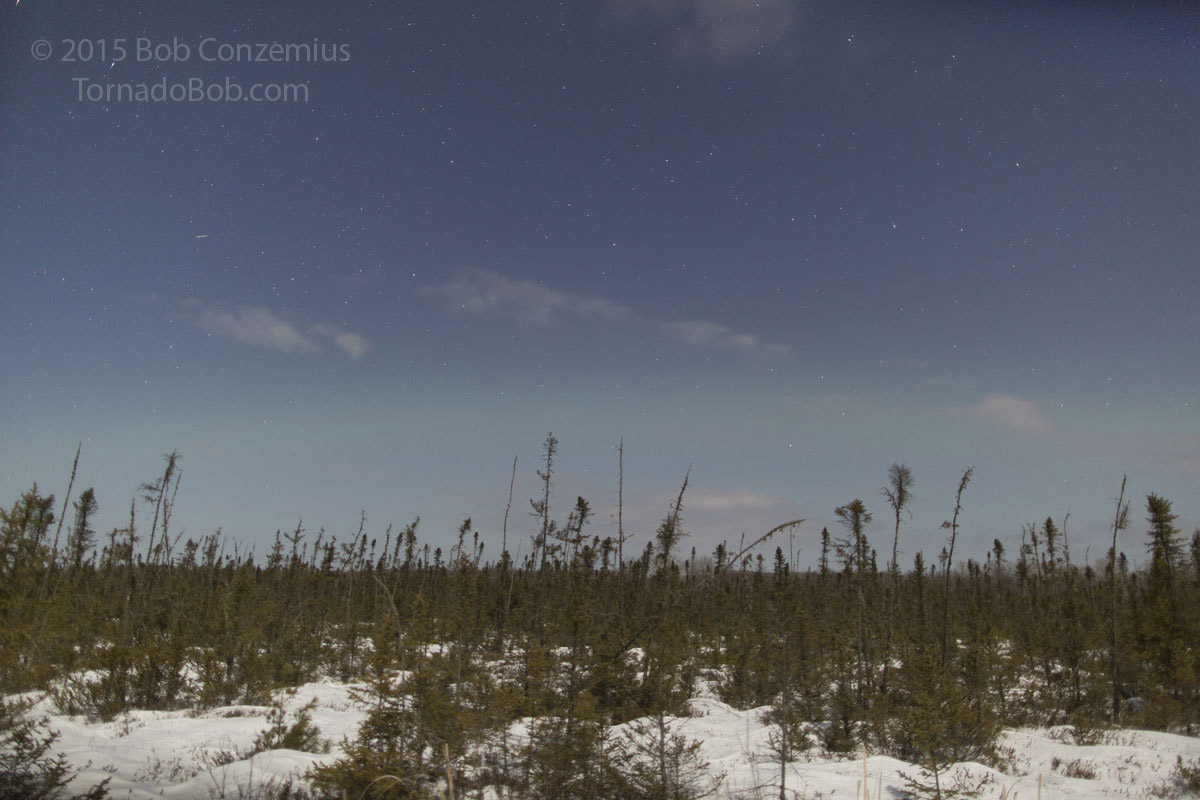 |
| Do you see the auroral oval in this image? |
After the quick stop at Peterson Road, I continued up Highway 38 to County Road 49 and all the way up to the Spider Lake boat landing. This time of the year and night, there was nobody there. Right in front of me was a nice island. I could not tell on Google Earth how good it might be as a shooting location, but when I got there, I liked it. I shot for a while, started a timelapse, and went back to the car to grab my skis to explore another area on the lake.
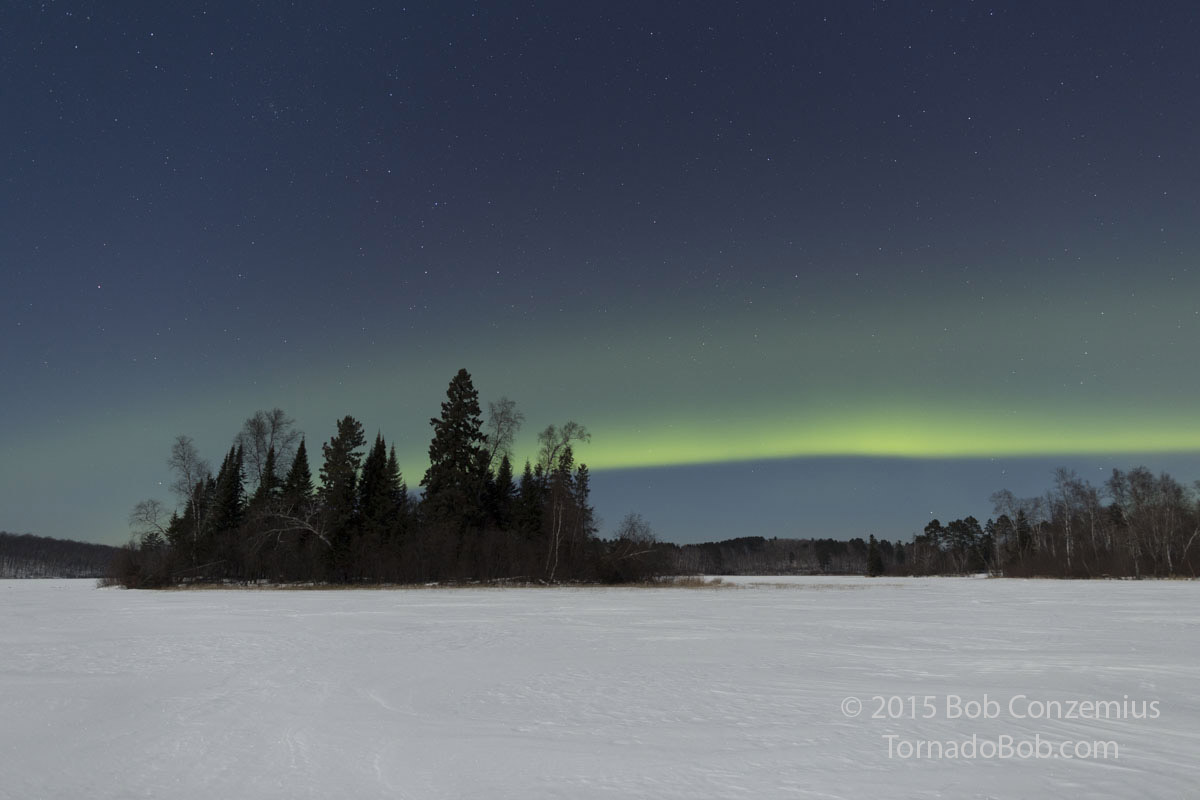 |
| Stepping onto Spider Lake. The auroral oval is brightening. |
A wolf started howling. It wasn't too far away. In previous situations, I always left when I heard a wolf that close, but knowing that they've almost never attacked anybody in Minnesota, I grabbed my camera to get a recording, then proceeded on my skis, across the lake, as planned while the camera continued to shoot time lapse. I guess that was really pretty silly, because when I got to the other area of the lake, it turned out the area was really quite photogenic, and then the auroras brightened up with a bit more structure. I kind of kicked myself a bit. Here are a couple shots from the camera as it ran closer to the boat landing.
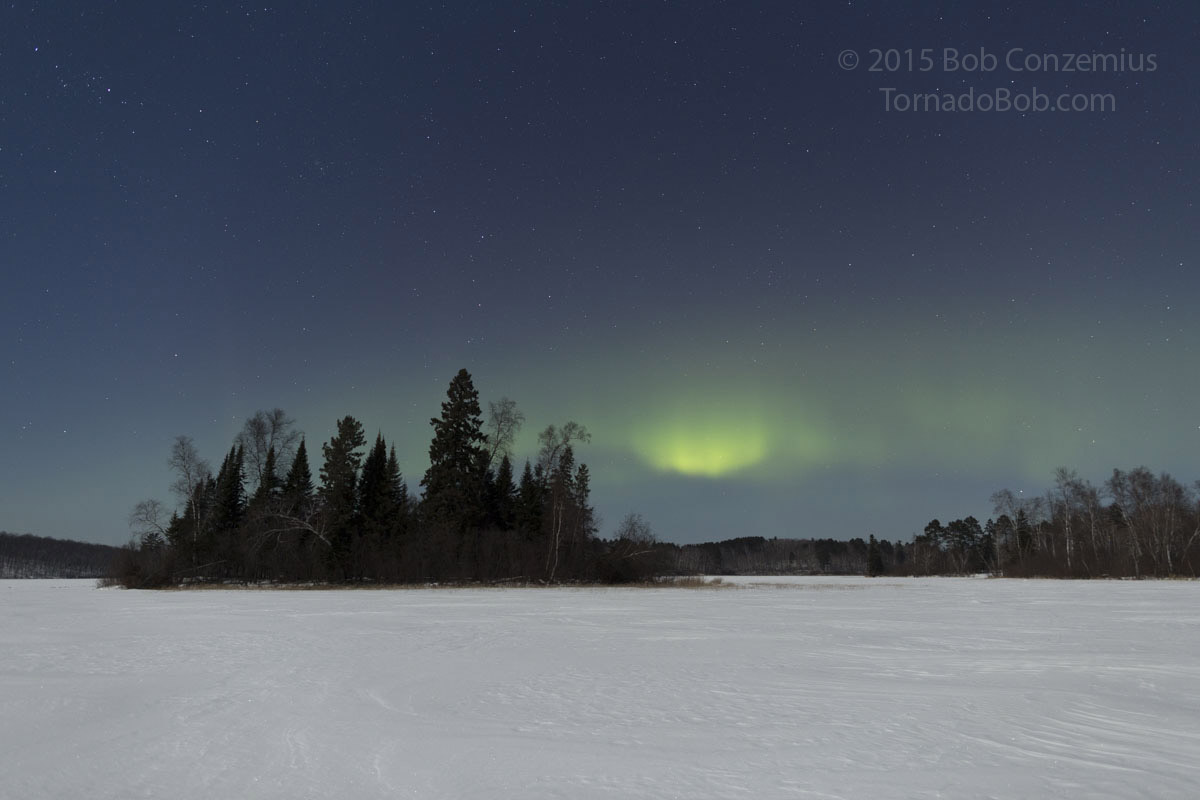 |
| A bit more structure to the auroras by the boat landing. A wolf has been howling. |
After seeing that the area a mile to my south was really pretty nice, I came back to get my camera and get to the southern site again. I set up my 16-35mm lens on the 5d Mk II and let it go in time lapse, knowing that it would run out of card space, and headed south again to get to the middle section of the lake. When I arrived, the auroras had dimmed quite a bit, but Bz was tipping nicely south again, so I anticipated that another brightening of the auroras would occur, but I was wondering whether it would be enough to counter the brightness of the moon.
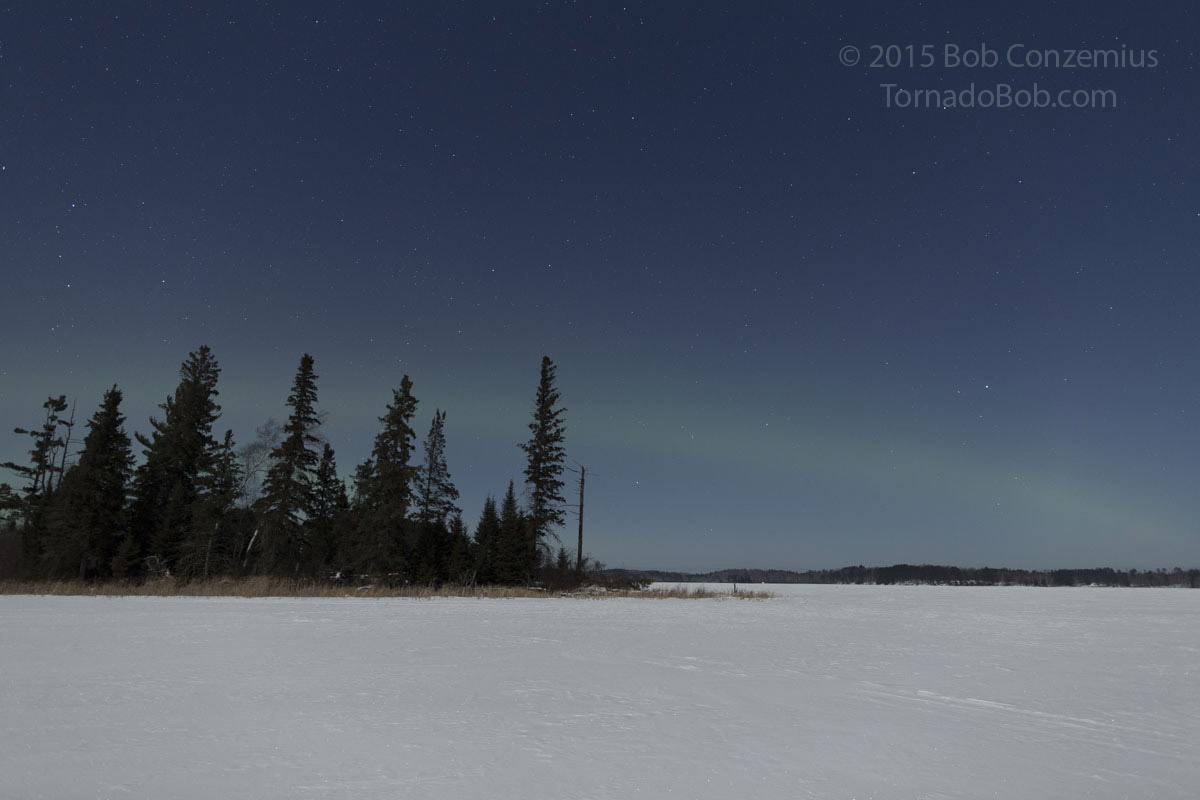 |
| Just arrived at the middle part of Spider Lake. The auroras have dimmed, but the oval is still there. |
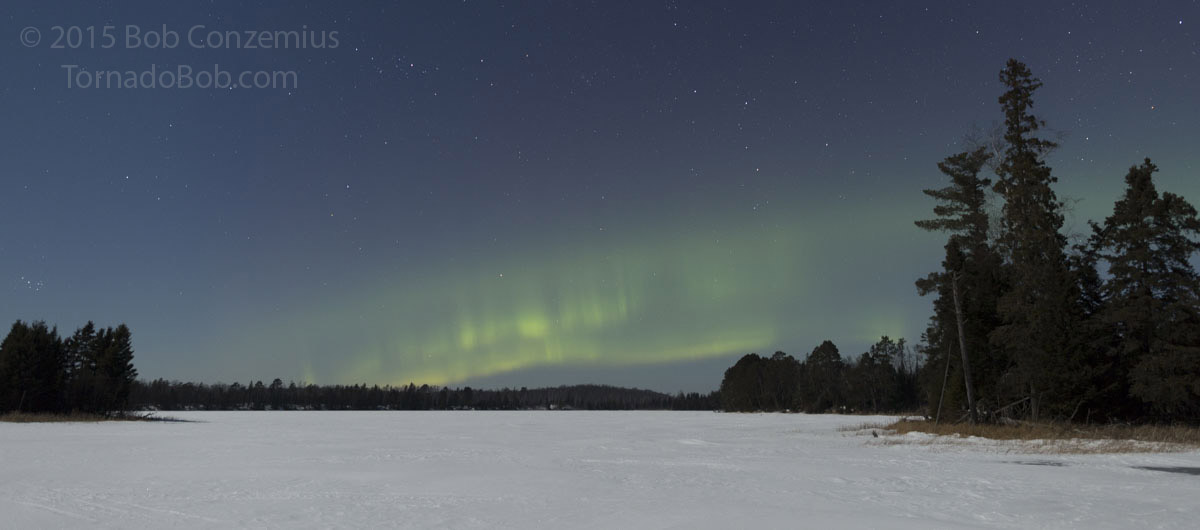 |
| Now it starts to brighten up a little, once again. |
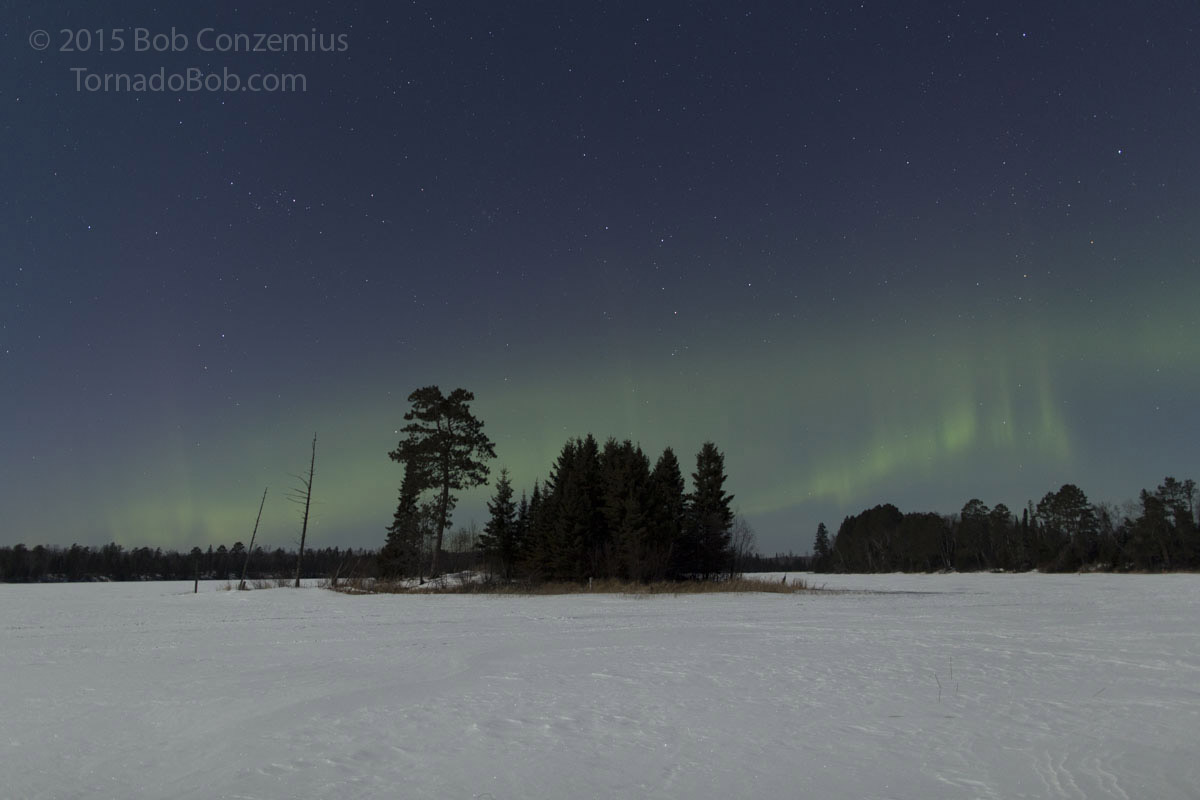 |
| Experimenting with some island shots. |
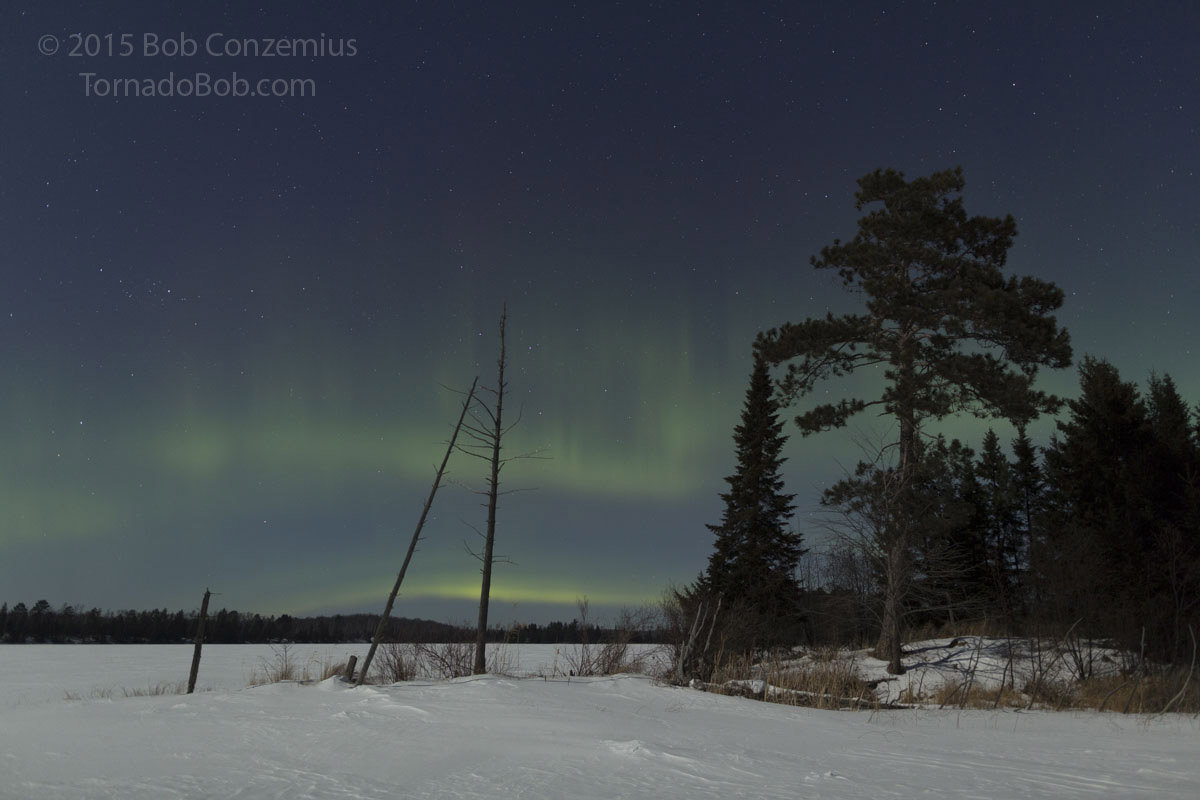 |
| A little structure here, popping out of this island. |
I continued to experiment with framing parts of these small islands as well as the clusters of dead trees that served as a nice foreground to everything. After about 15 or 20 minutes of doing this, the auroras started to brighten up a bit. No big deal, but it was pretty nice. Then, some really bright columns started to appear-- bright enough that you could see the colors without the aid of the camera. These areas of brightness multipled and started dancing around, and so did I! I usually don't do that, but it had been a while since there had been a pretty nice show like this, and I had a nice foreground. I let the time lapse run and enjoyed the show.
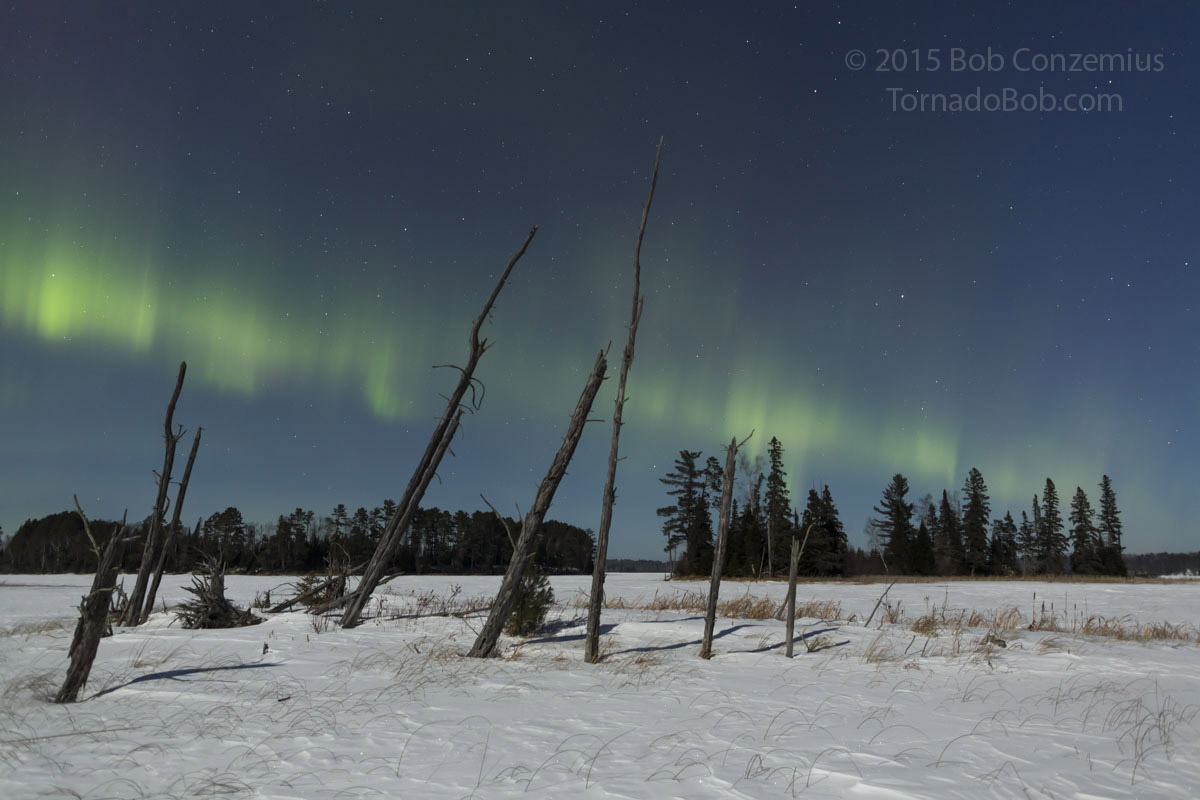 |
| In front of some bare trees. Hmmm... it's getting brighter. |
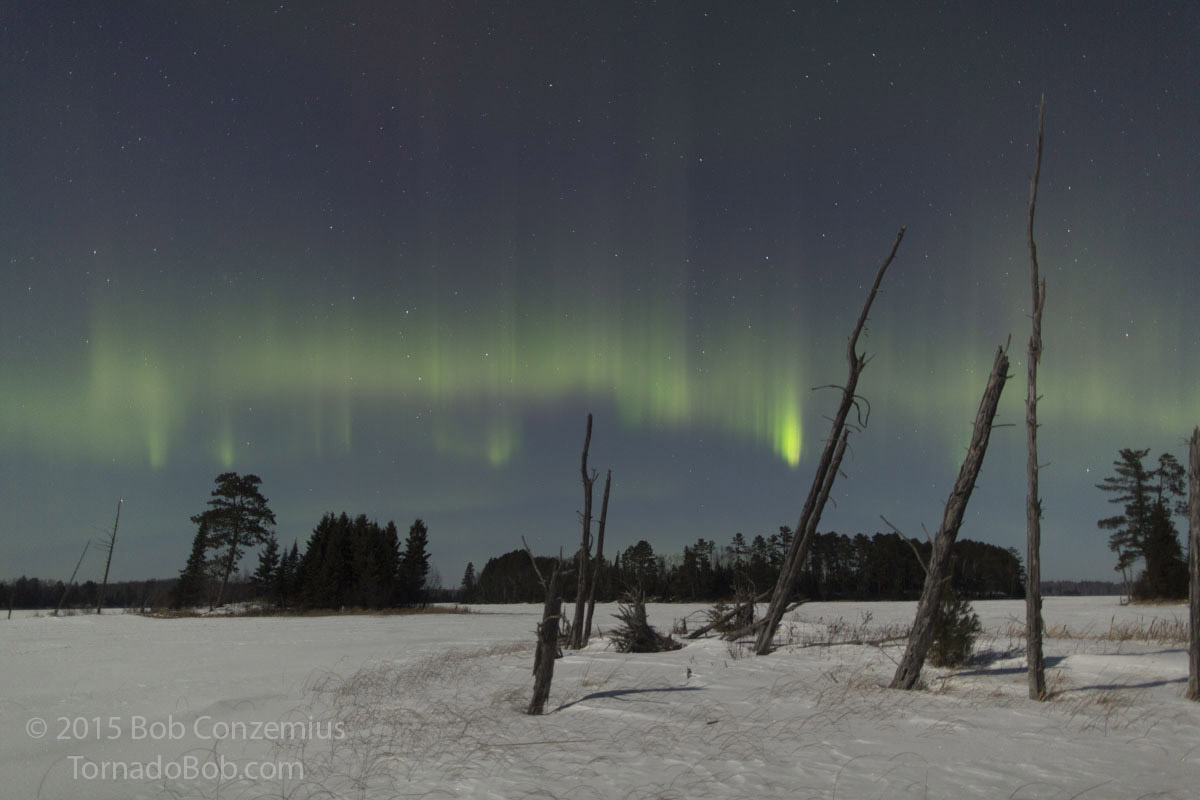 |
| Now the structure is starting to stand out against the bright moonlight. |
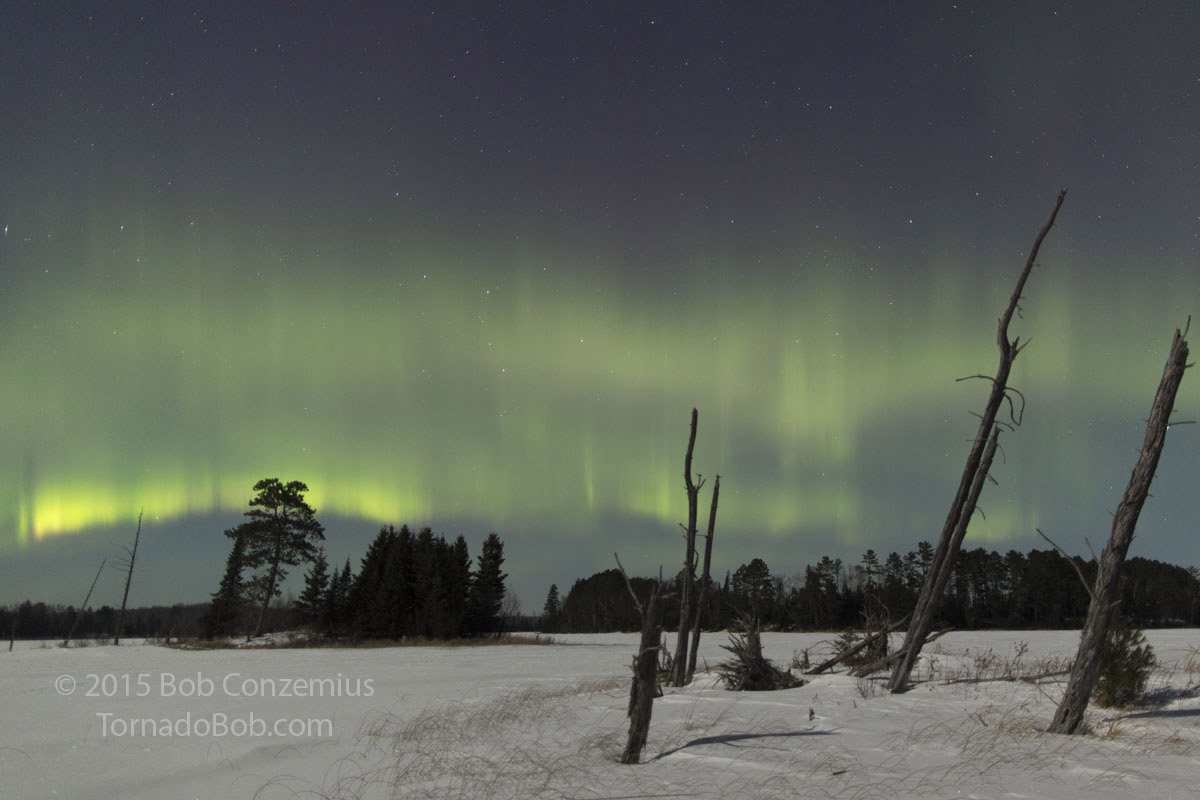 |
| The bright structures are spreading! |
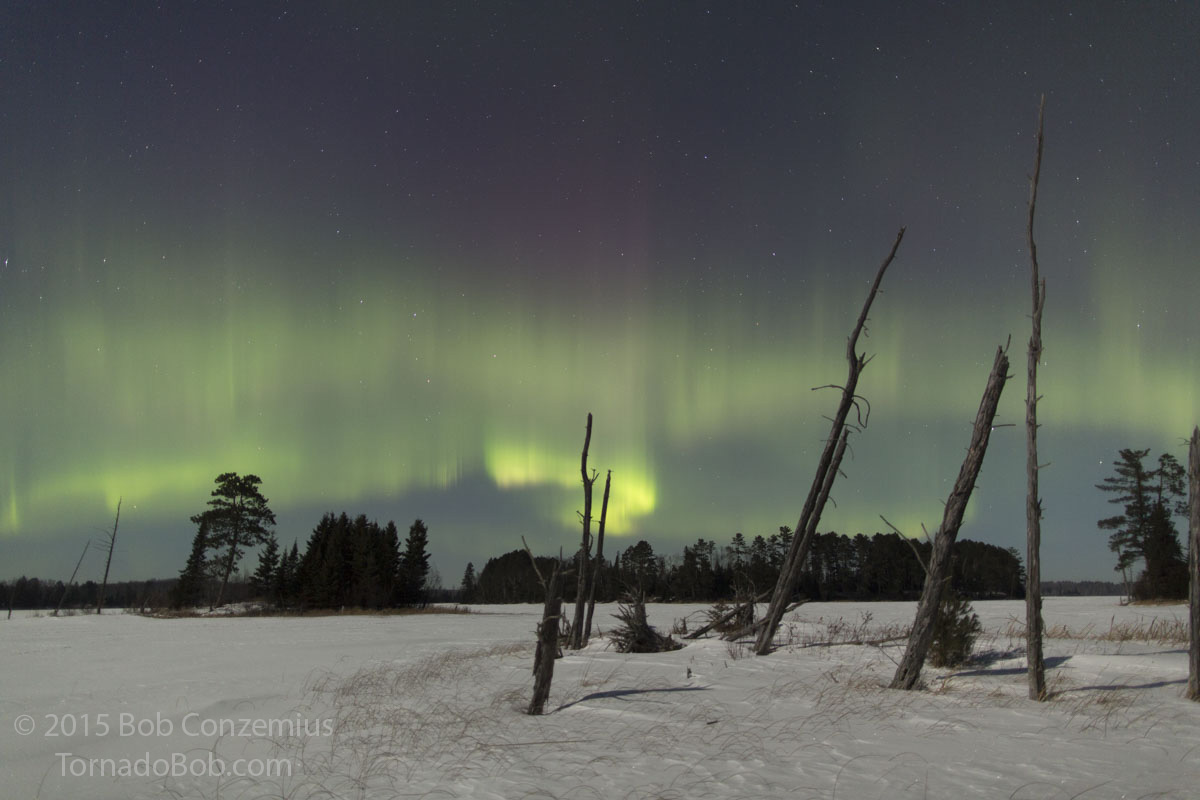 |
| The bright structures are spreading! |
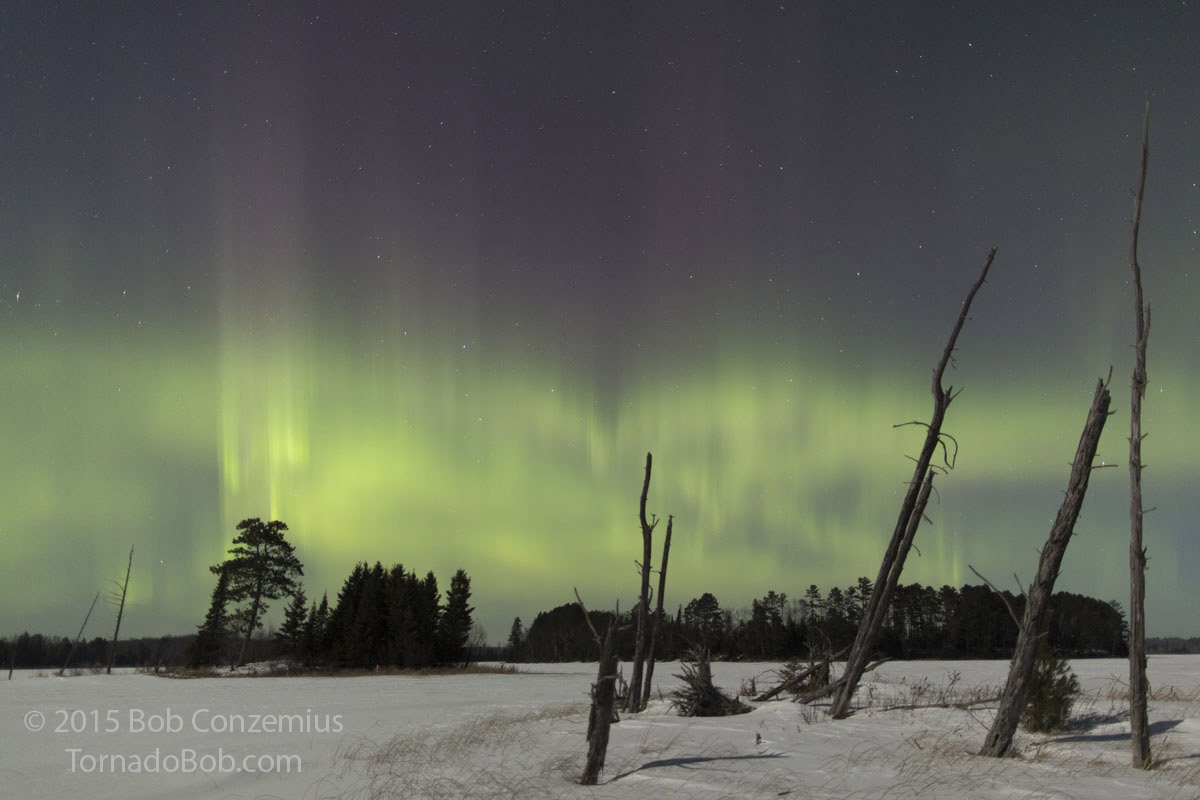 |
| Now maybe about its best. |
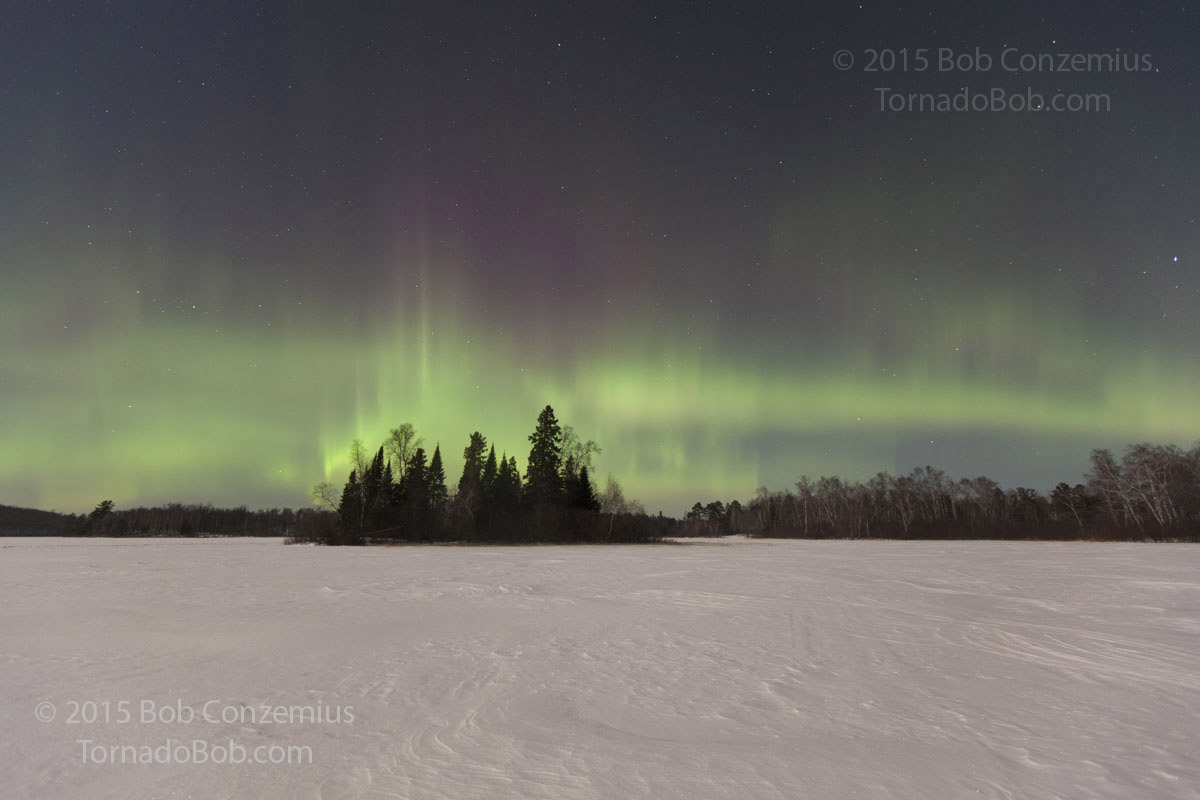 |
| Meanwhile, back at the boat landing. |
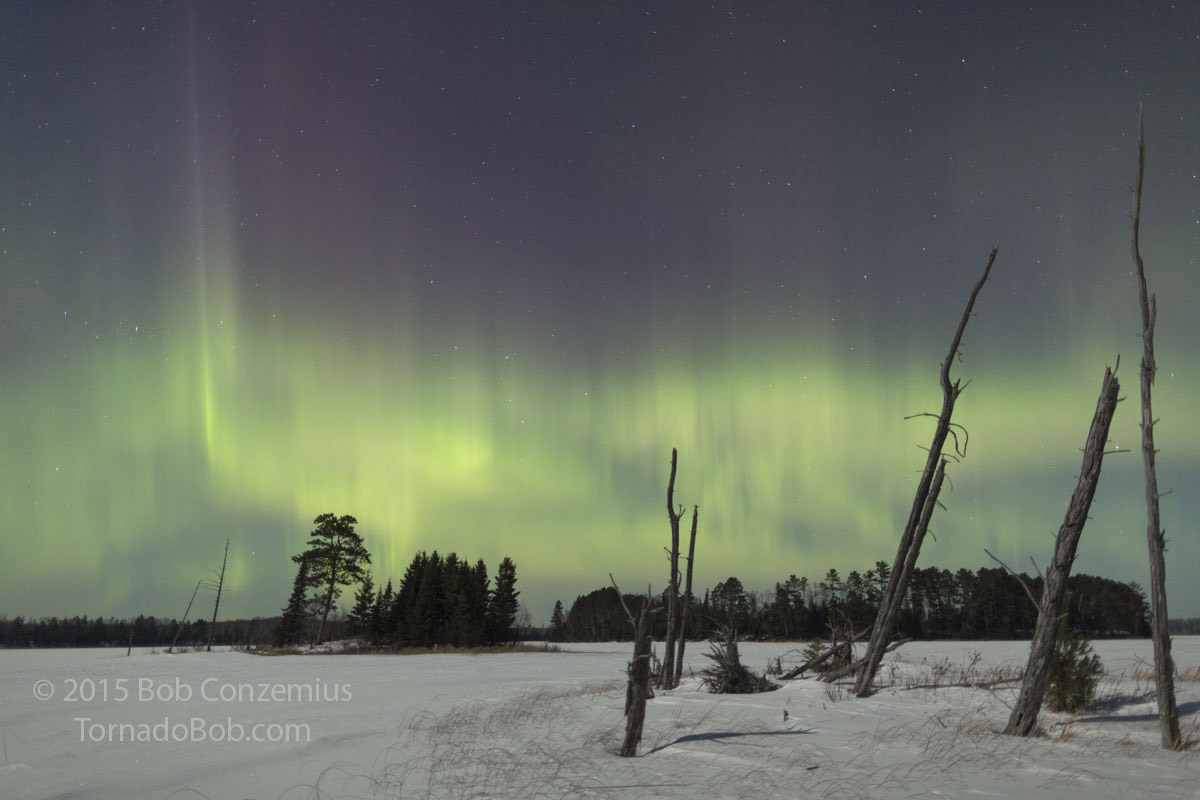 |
| The auroral structure on the left matches the tree structure on the right. |
Soon, the auroras faded a bit, but they also spread across more of the sky, filling up the entire northern half, to about right over my head. I then experimented with a few more compositions, after which time I started back north to the boat landing.
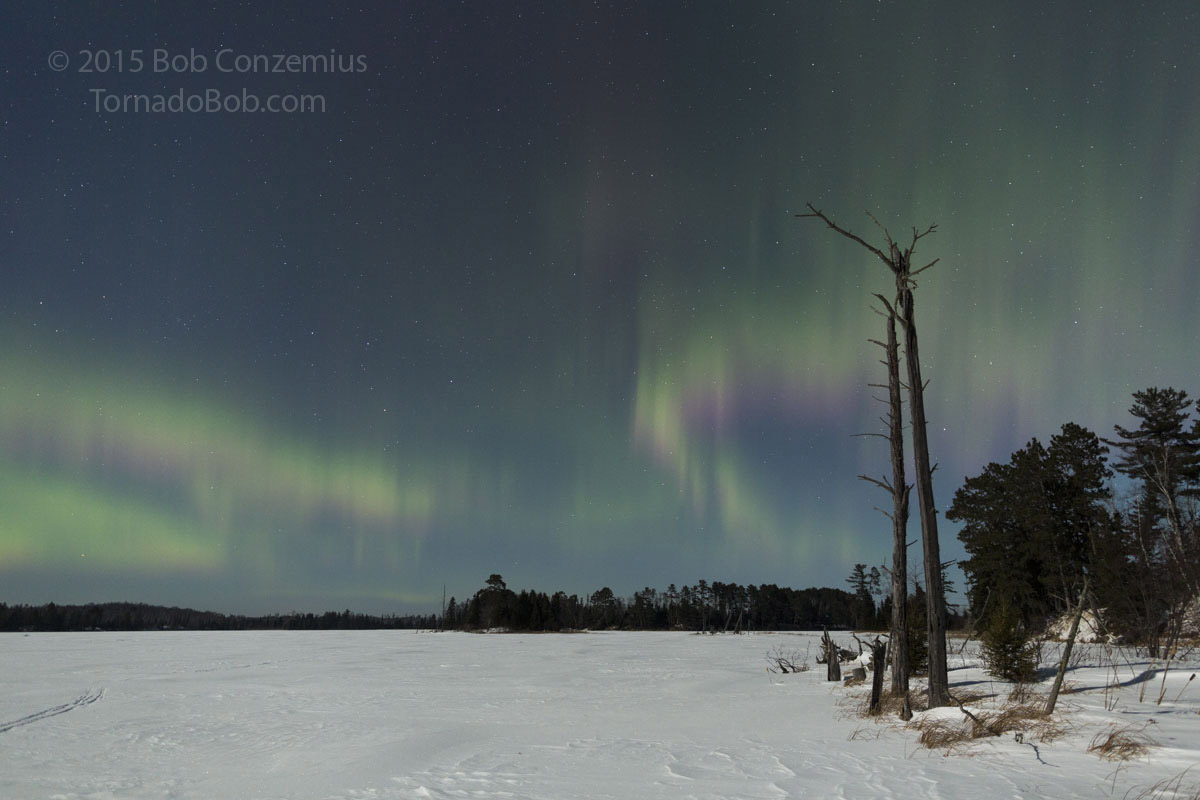 |
| Dimmer structures now fill most of the sky. |
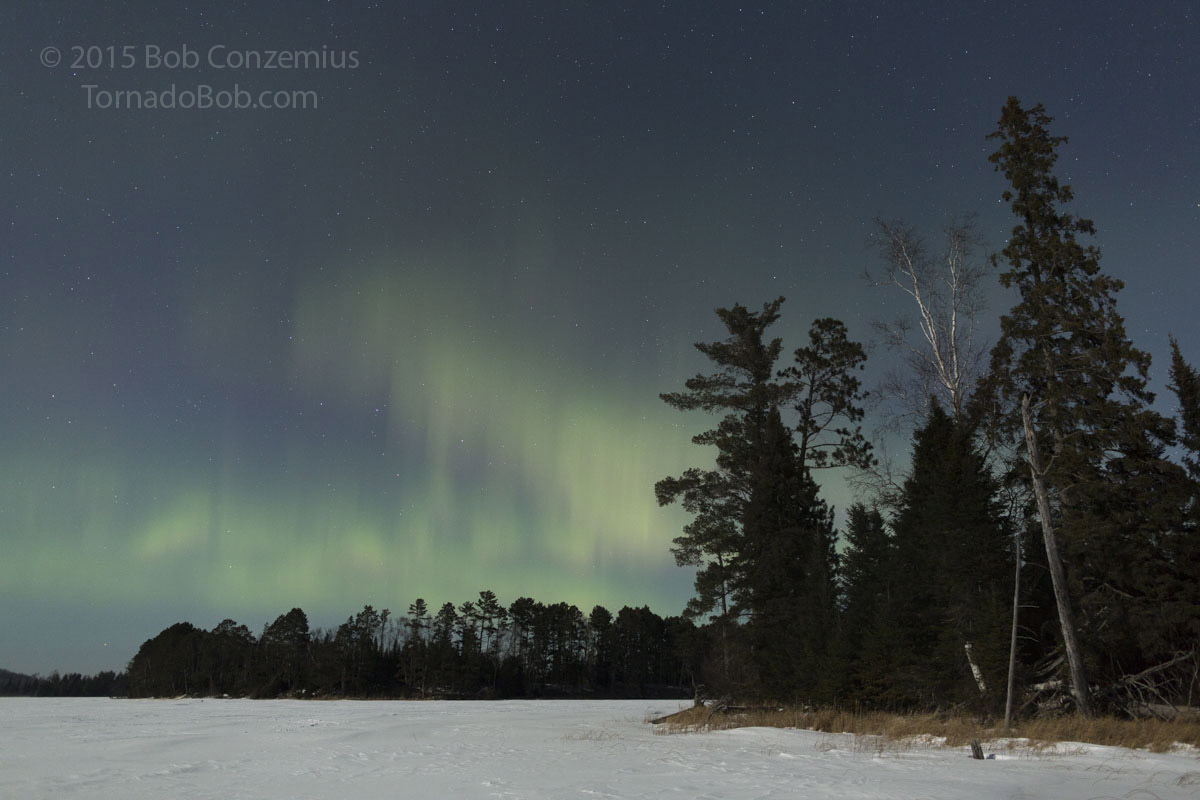 |
| Another composition... |
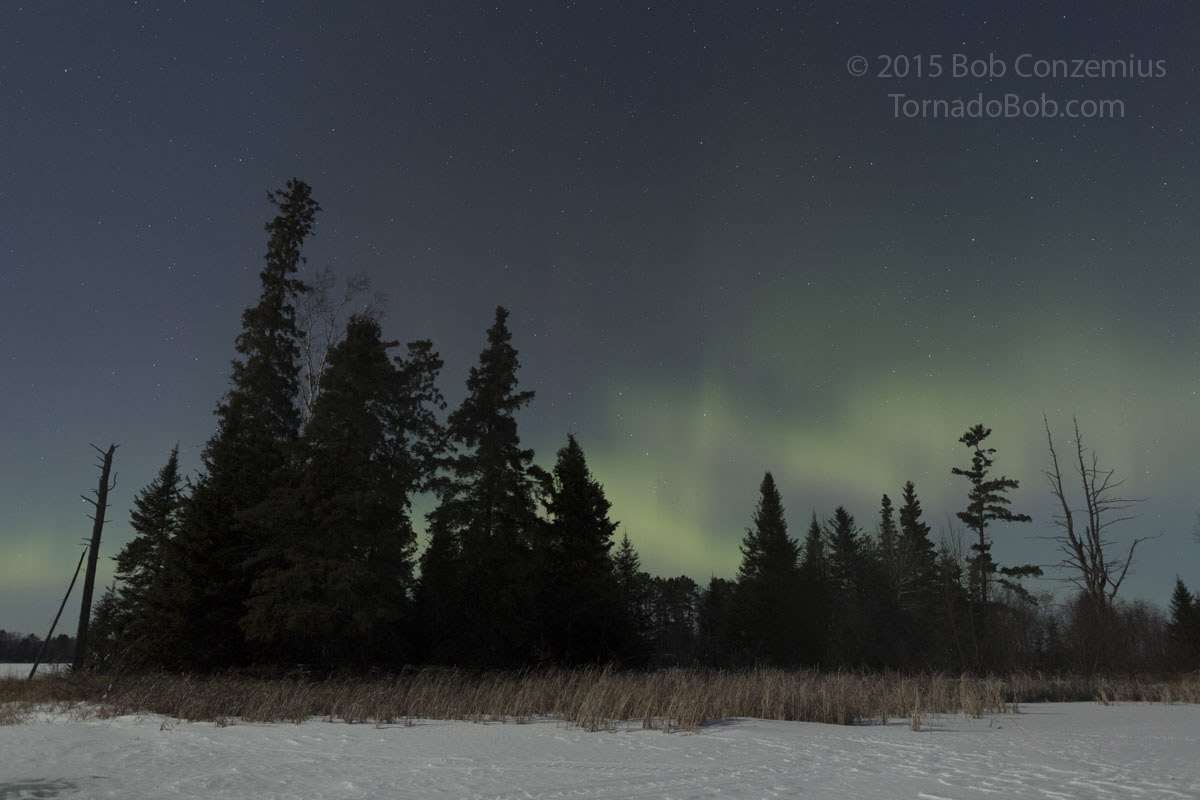 |
| ...and another. |
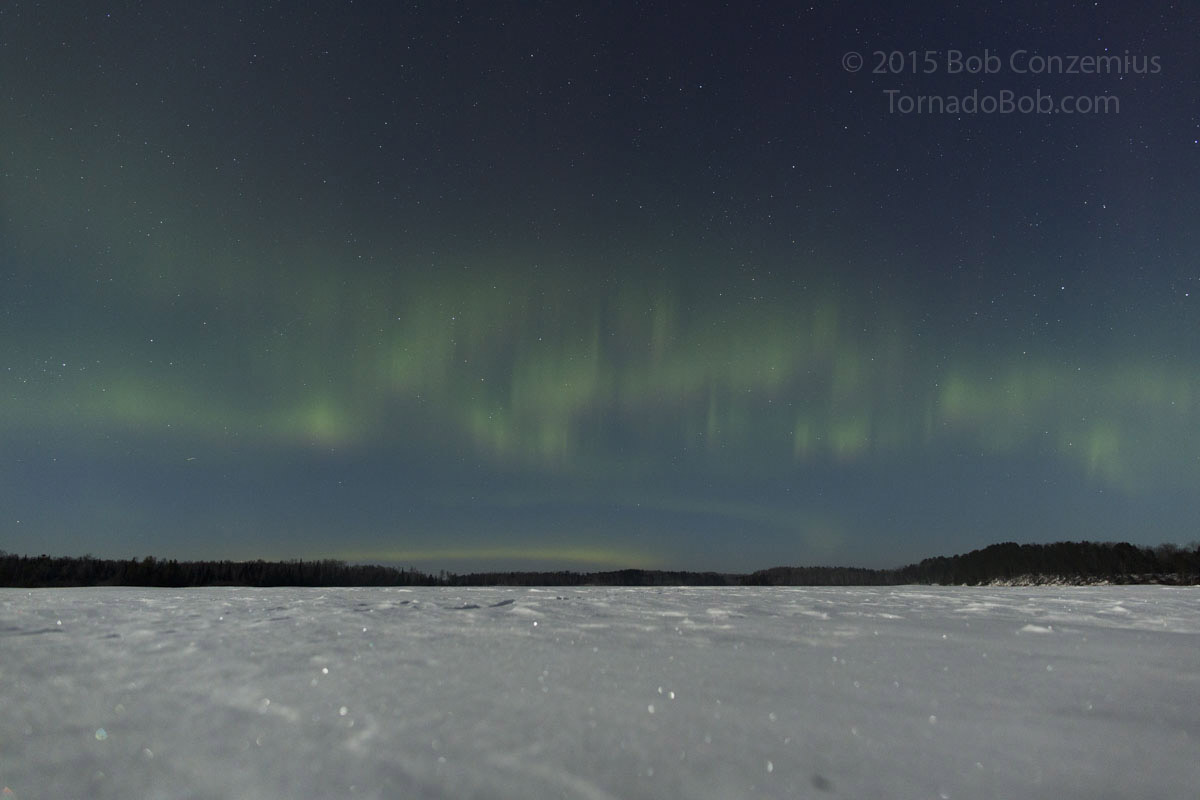 |
| About halfway back to the boat landing, in an open part of the lake. I set my camera down on the snow. |
As I reached the island area just south of the boat landing, the auroras brightened up again, delaying my departure from the lake. After maybe another 20 minutes here, I loaded the camera equipment back in the car and headed home.
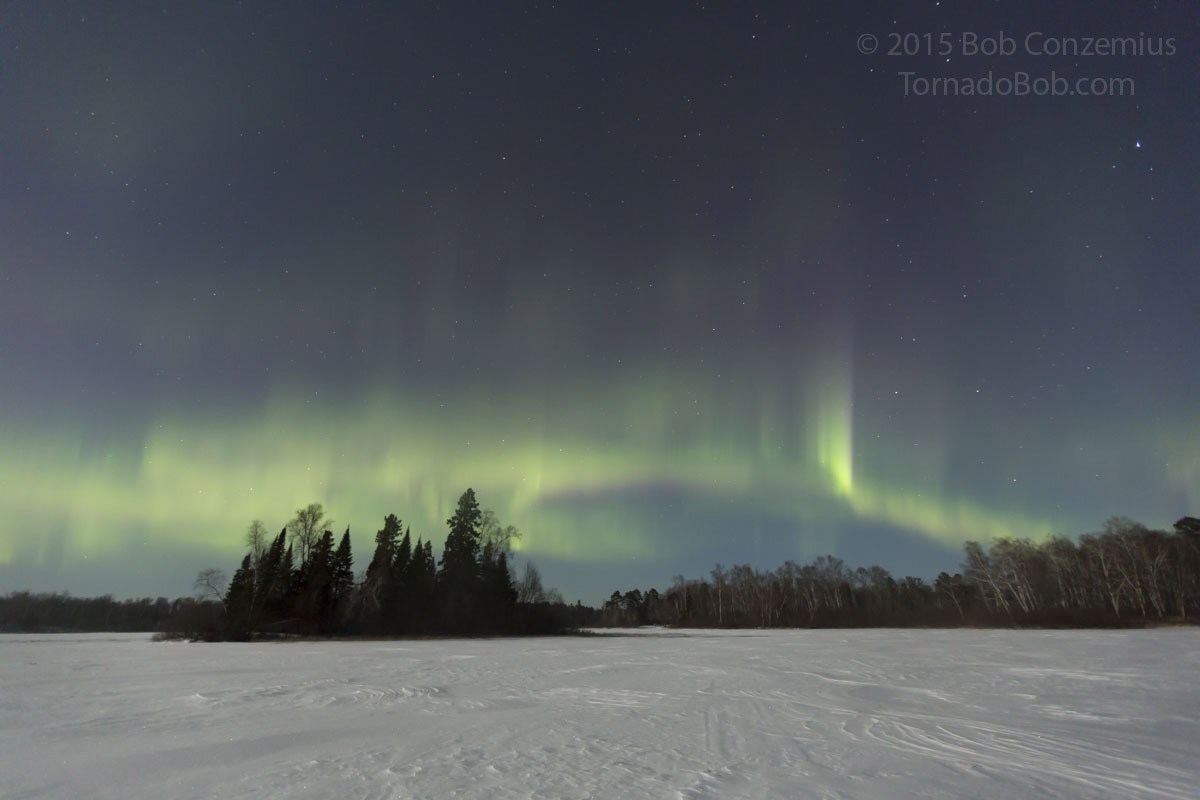 |
| I got back to the island by the landing, and another show started! |
Auroras over Spider Lake from Robert John Conzemius on Vimeo.
Back to Auroras | Home